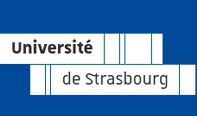Prof. Tom Witten: "Electrostatically induced clustering of Coulomb-blockaded nanoparticles"
James Franck Institute, Chicago
| What |
|
|---|---|
| When |
Nov 05, 2010 from 02:30 PM to 03:30 PM |
| Where | «Institut Charles Sadron, Amphithéatre H. Benoit 23 rue du Loess, Strasbourg» |
| Add event to calendar |
|
Abstract
One distinctive attribute of the nanoscale is the Coulomb blockade. Adding even a single electron to a nanometer-scale particle requires substantial energy compared to the thermal energy kT. Thus charging is inhibited, and charged particles are rare. The implications for charge transport through such particles have been widely recognized. Here we explore the structural consequences of the electrostatic attraction between a rare charged particle and its neutral neighbors. Such interactions were invoked by the Murray group [1] to account for the great structural diversity seen in binary nanoparticle lattices. The anisotropy and clustering of nanoparticles in these lattices are normally seen in atomic alloys where non-pairwise-additive quantum effects determine the structure. Such quantum effects cannot be important in colloidal nanoparticle lattices. However, the distinctive electrostatics of these particles can provide similar non-pairwise-additive interactions. This talk focusses on the singular dependence on separation seen in such clusters. We show that this singular dependence arises from a simple adjacency matrix characterizing the cluster.
[1] E. V. Shevchenko, D. V. Talapin, N. A. Kotov, S. O'Brien, and C. B. Murray, Nature *439* 55 (2006).

